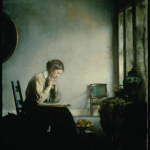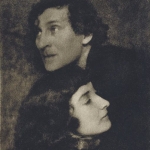MIKHAIL BULGAKOV ~ THE EYES AND THE TRUTH

“The tongue can conceal the truth, but the eyes never! You’re asked an unexpected question, you don’t even flinch, it takes just a second to get yourself under control, you know just what you have to say to hide the truth, and you speak very convincingly, and nothing in your face twitches to give you away. But the truth, alas, has been disturbed by the question, and it rises up from the depths of your soul to flicker in your eyes and all is lost.”
― Mikhail Bulgakov, The Master and Margarita







